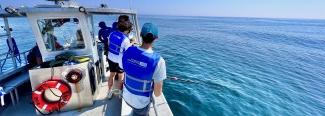
A device that emits weak electrical signals could solve a major issue in commercial fishing and help a species at the same time

一群学生在 正规澳门赌场网络, led by Assistant Professor John Mohan, Ph.D., are researching a practical and novel device that helps fishermen avoid reeling in sharks, an unwanted bycatch that sometimes ends up dying in the process.
The device emits a weak electrical current at random intervals to deter sharks from interacting with a baited hook. The cylinder-shaped devices are easily attached to fishing lines and use lithium battery-powered microprocessors to generate the electrical currents.
“Sharks possess specialized cells that can detect weak electrical pulses that help with feeding. Bony fish, like tuna, haddock, and swordfish lack these specialized cells,莫汉说。.
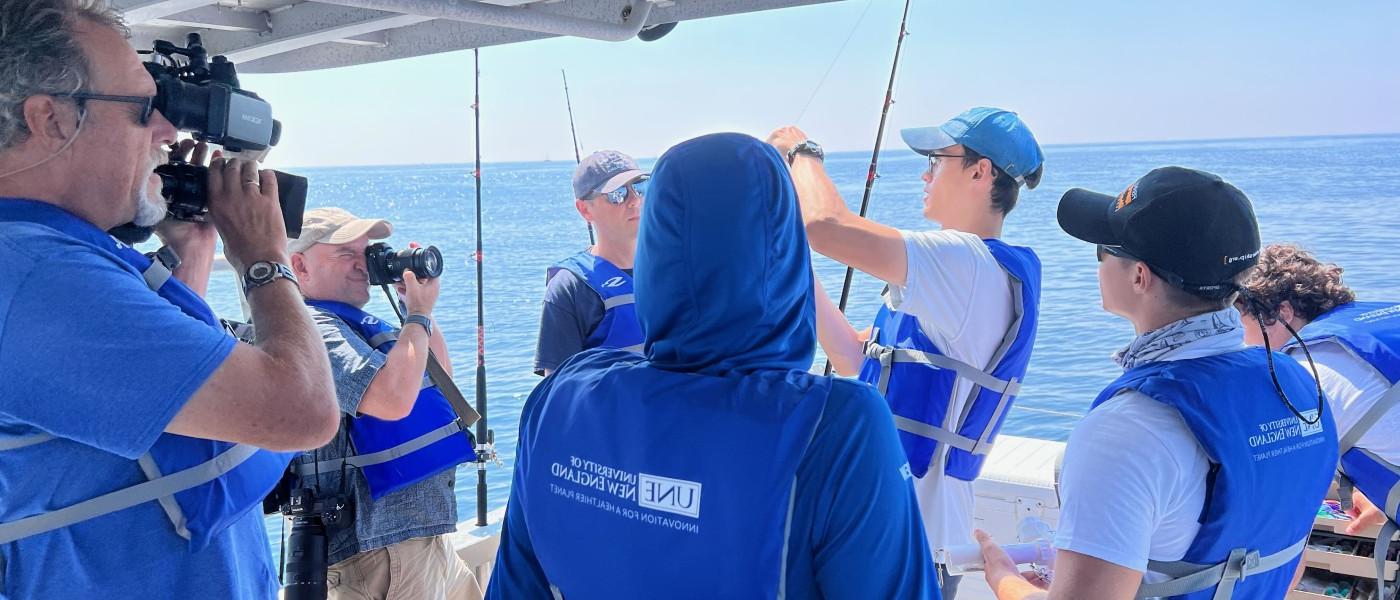

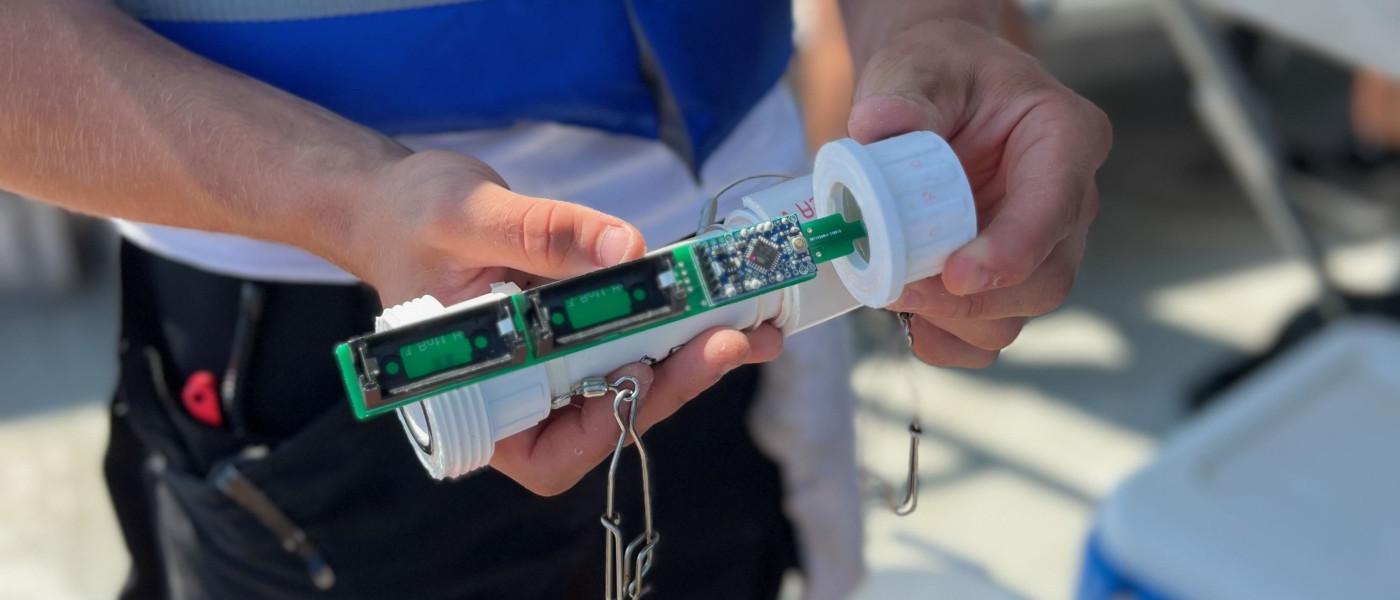
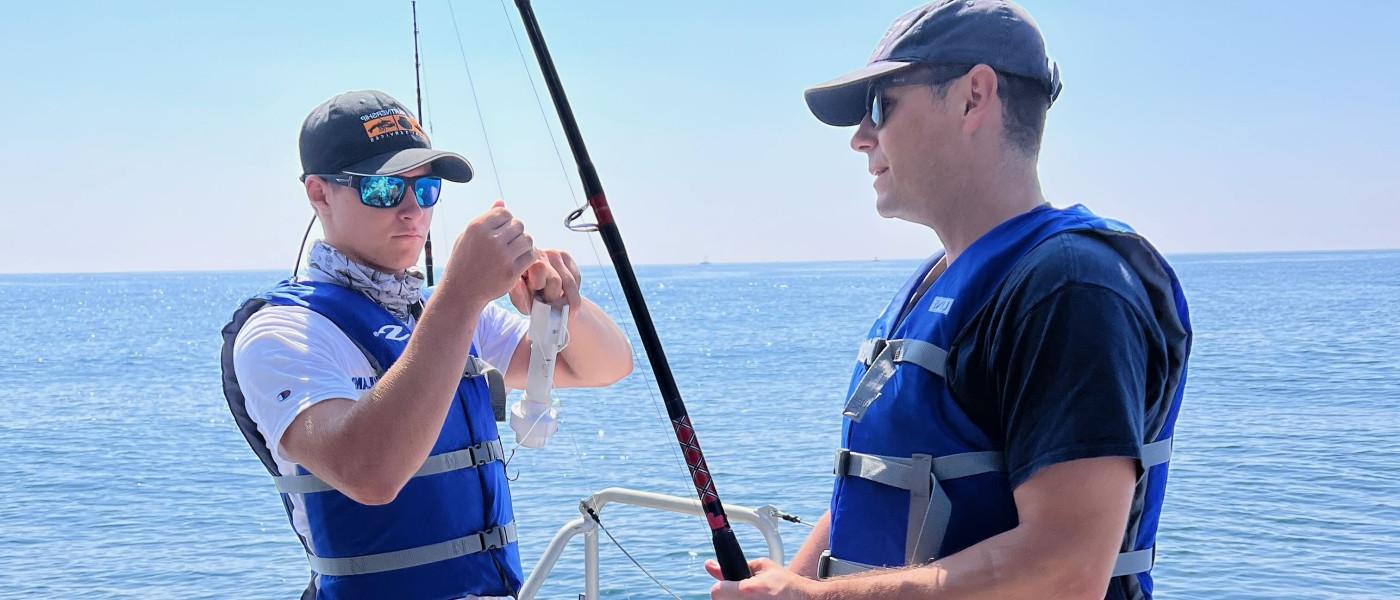
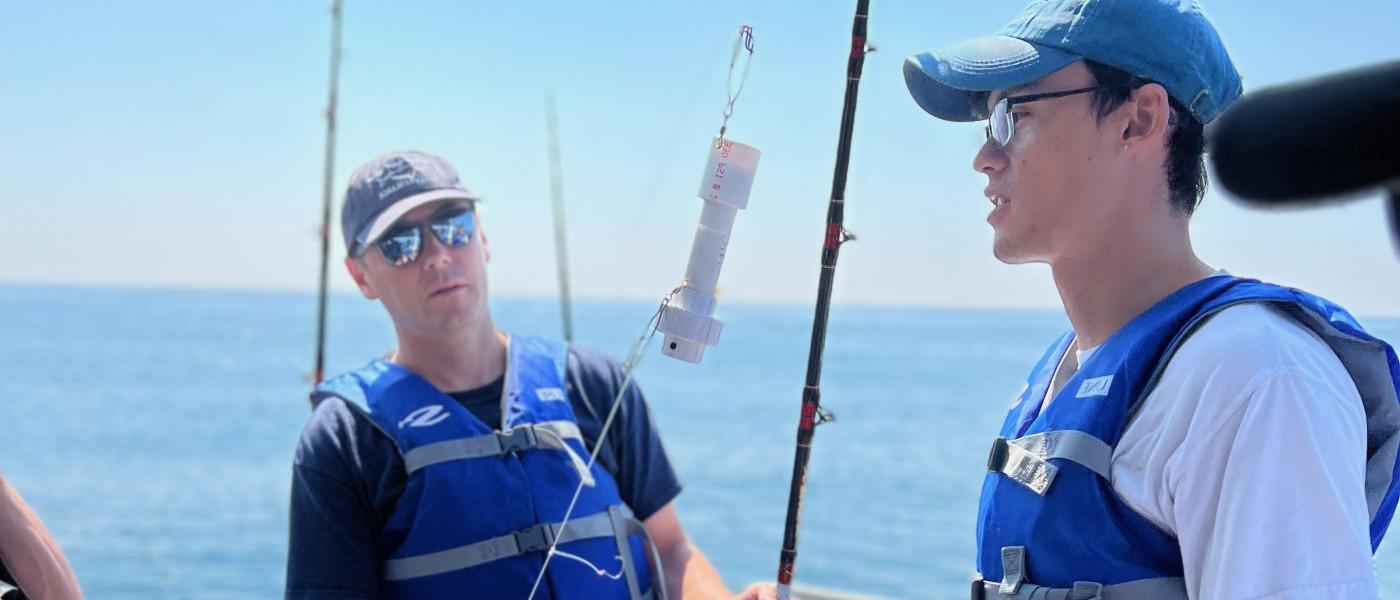
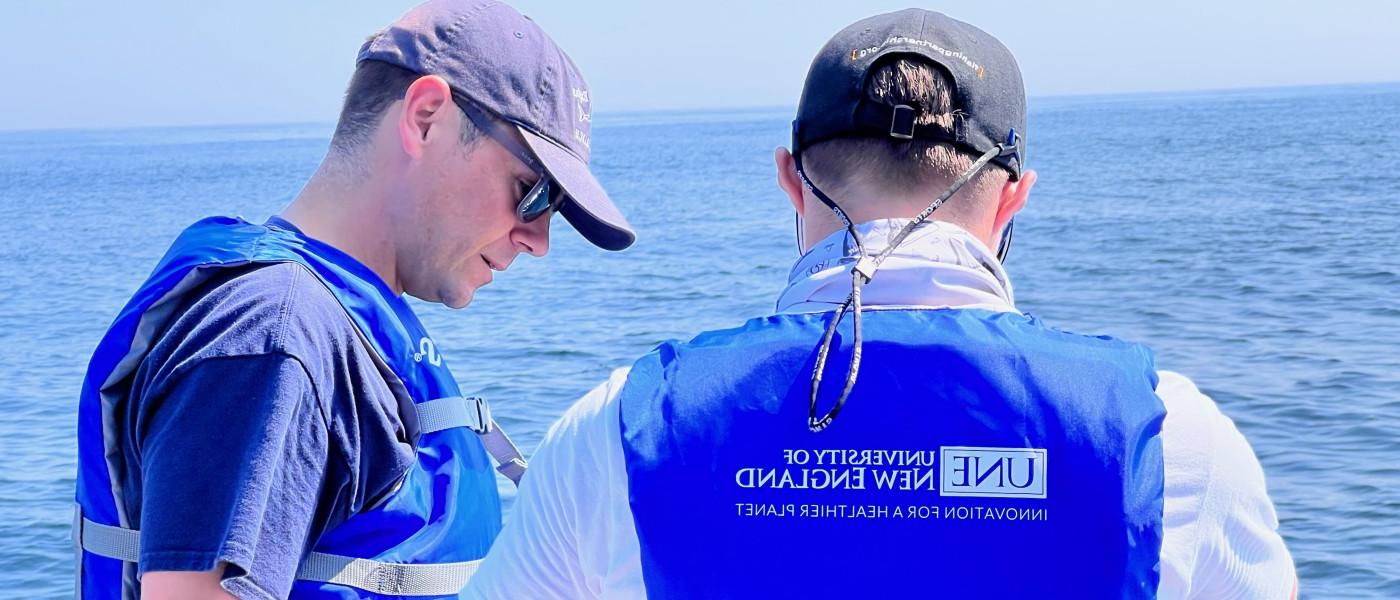
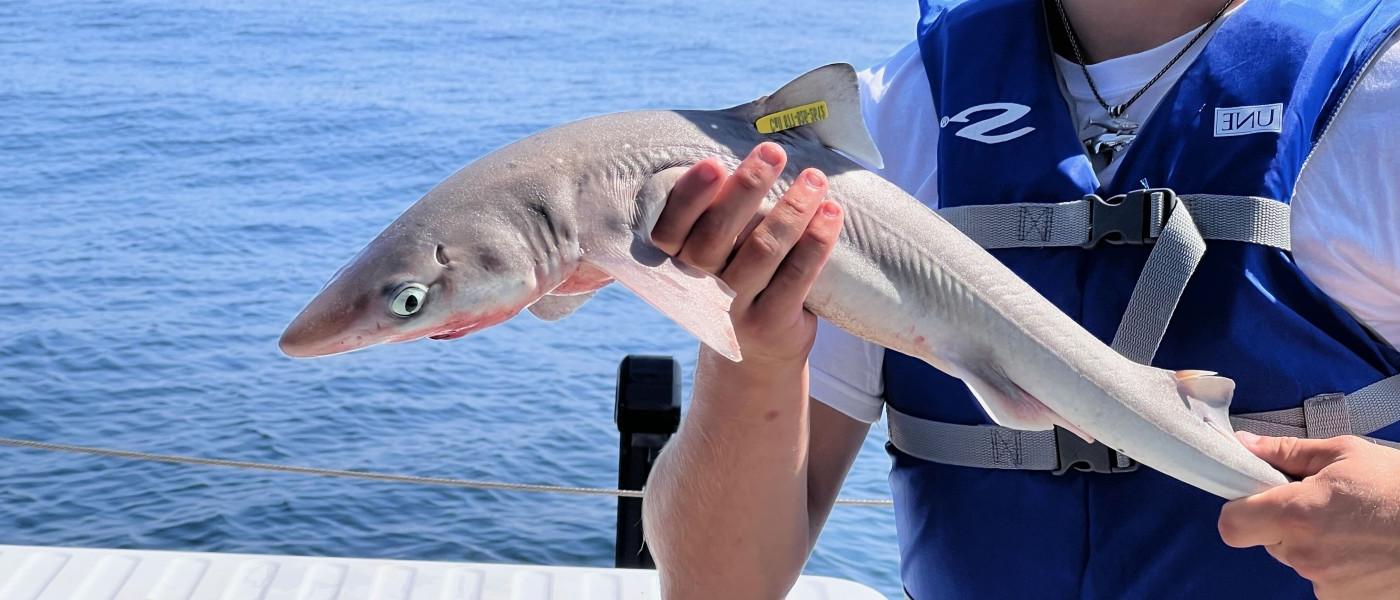
Mohan’s group has spent over 100 hours conducting experiments with the devices and is part of a coalition of universities and research institutions working on this project.
“This highly collaborative project is funded by a NOAA grant program and it involves a diverse team of fisheries scientists, 鱼类生物学家, 物理学家, and fishermen from across the country,莫汉说。.
在最近的一次钓鱼探险中, 12 miles out to sea from UNE’s Biddeford Campus, student researchers demonstrated the effectiveness of the bycatch reduction devices, 或惟妙惟肖, in the heart of spiny dogfish territory. These sharks are bottom feeders and hunt in the same territory as popular target catches like mackerel and haddock.
"By using this device on two of our four fishing lines, we were able to show how it deters this frequent bycatch species,克莱顿·尼里说。海洋科学, ’25), who noted that the two other rods used that day did not have the device, acting as a “control” for the experiment.
While Nyiri is leading the recreational side of the research, 迈克尔·阮 (M).S. 海洋科学, ’24) leads the commercial research efforts. He spent the month of August in North Carolina testing the BRDs on longline fishing vessels, which can deploy strings of fishing lines up to 15 miles long. While he is still analyzing the data from that field test, data from another commercial longline test suggests these devices reduced bycatch by more than 50%.
“Reducing shark interactions with the pelagic longline gear is a NOAA Fisheries Management priority,Nguyen说. “This device has a high potential to significantly reduce these interactions.”
Nyiri said this device presents significant benefits to the fishing industry because it helps protect a species without implementing traditional conservation strategies like fishing ground closures, 重大齿轮改装, 或者强制的钩子类型.
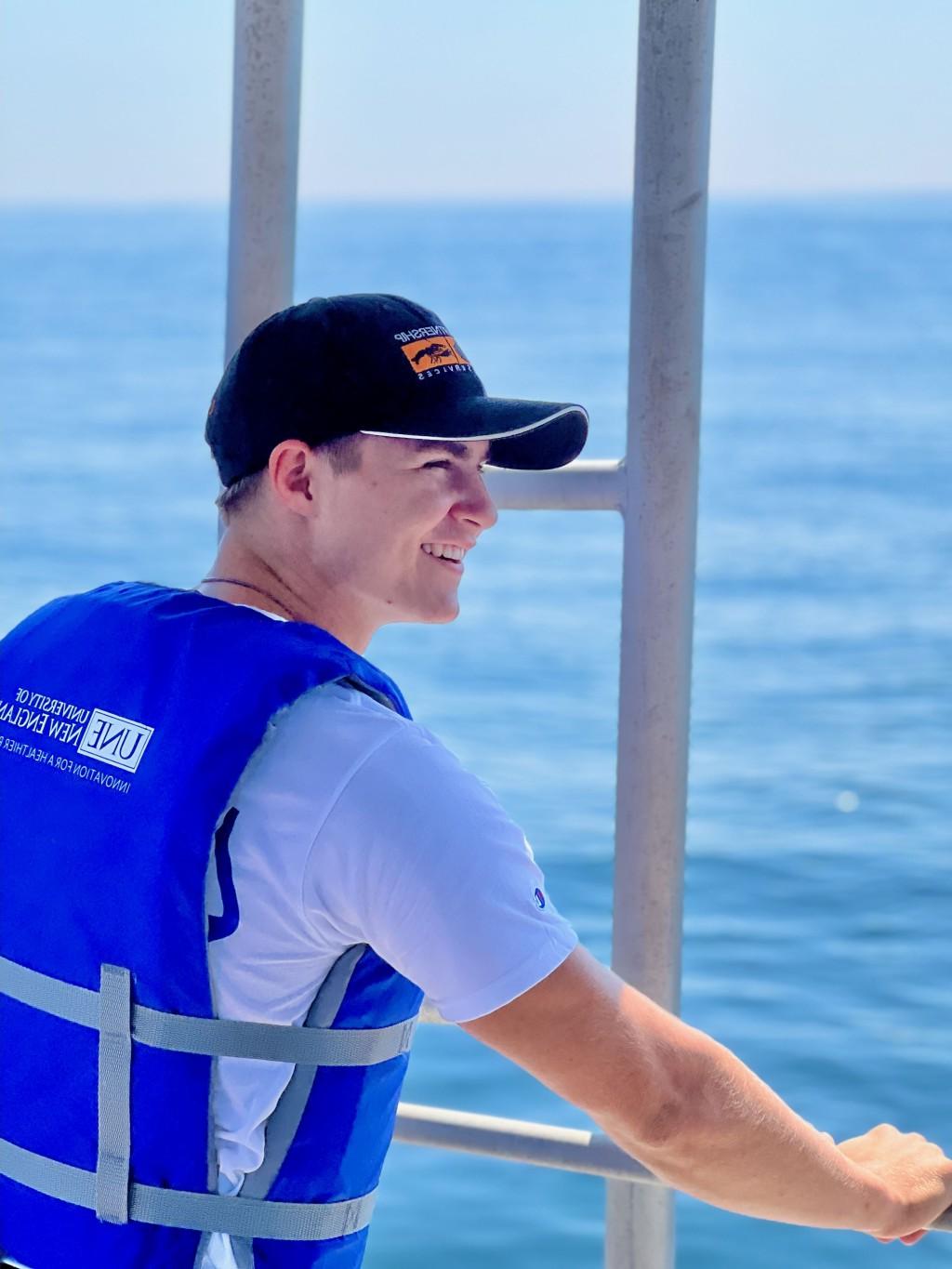
克莱顿·尼里(海洋科学), ‘25), looks to his fellow researchers on a recent expedition to demonstrate a bycatch reduction device on the open ocean.
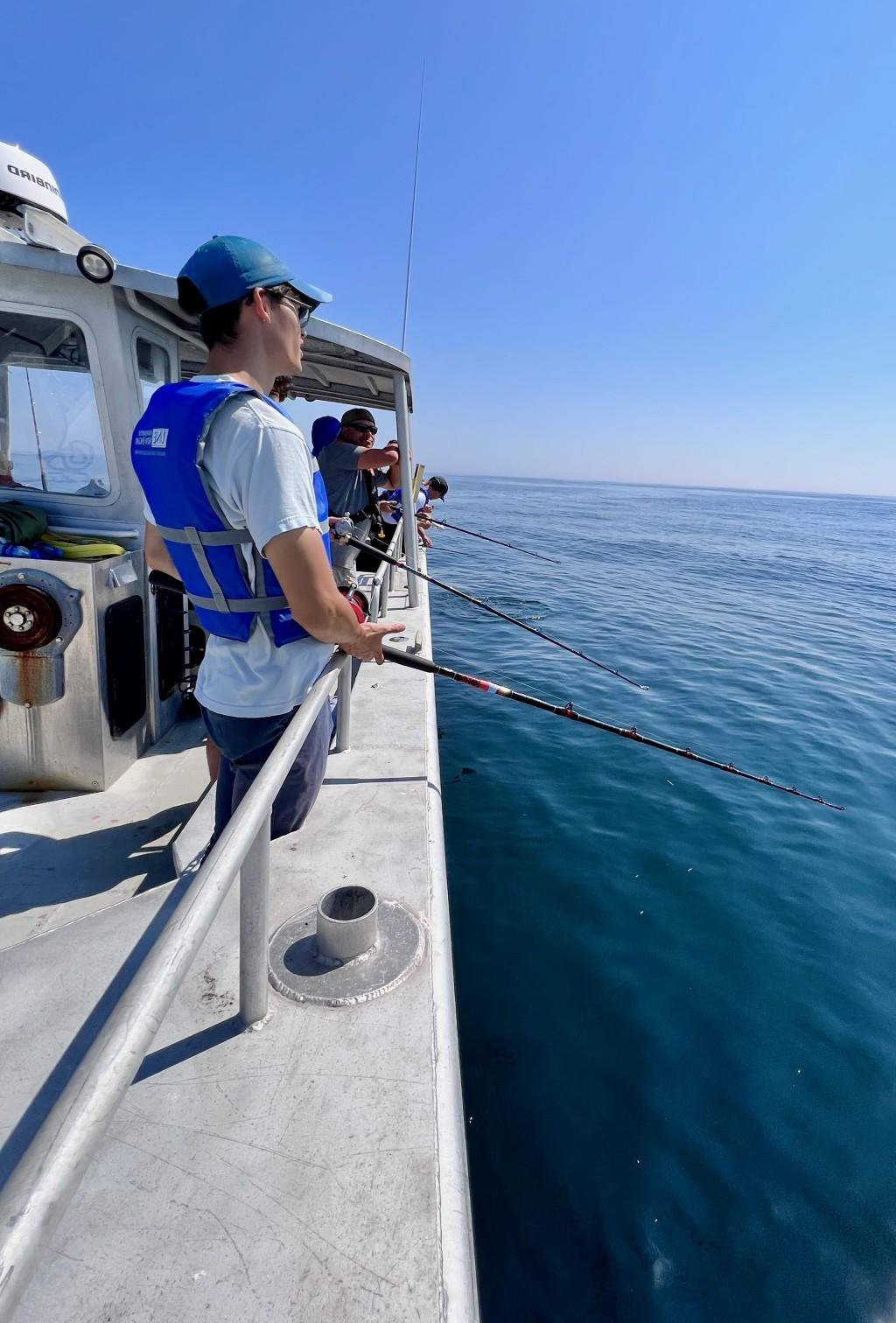
迈克尔·阮 (M).S. Marine 科学, ‘24) is researching how bycatch reduction devices can help commercial fishermen.
“Although we understand it will take some time for fishermen to trust the device, our research suggests a promising future for the BRD,尼里说。.
The BRD still faces several hurdles before it reaches the commercial market. 沟通, 行业推广, and testing on other species and fisheries are the immediate next steps in the technology’s development. But Mohan believes the industry will latch on to the concept once they see the benefits.
“对整个行业来说, shark-gear interactions have financial implications including reduced target catches, 齿轮损坏或丢失, 并且增加了齿轮检索时间,莫汉说。. “应用ing this novel technology in fisheries is a win-win for both the sharks and fishermen.”